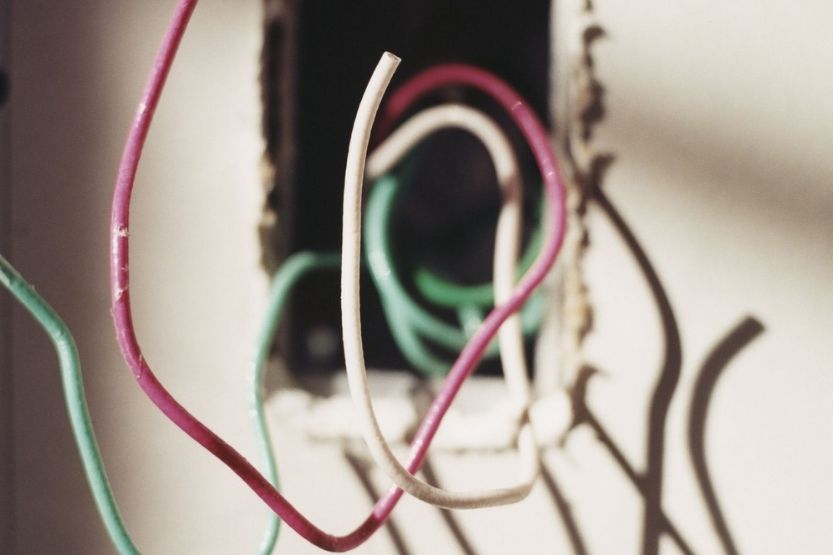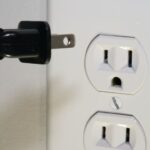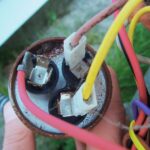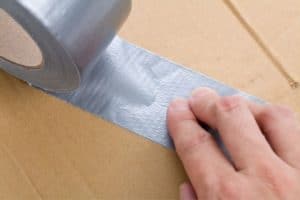The series and parallel circuits are two basic principles in studying electricity. But between wiring in series vs parallel, which is the better option?
Outlets wired in a series circuit are connected in a continuous row, while outlets wired in parallel are in constant contact with a continuous circuit pathway. In a series circuit, if one outlet fails, the rest will also stop working. But in a parallel circuit, all outlets will continue to work even if one fails.
Read on to learn more about wiring outlets in series vs parallel, how to wire outlets in series, and more.
Wiring Outlets in Series Vs Parallel

Outlets wired in parallel are in constant contact with a continuous circuit pathway. At the same time, outlets wired in a series circuit are connected in an ongoing row. In a series circuit, if one outlet fails, the rest will also stop working. In the case of a parallel circuit, all outlets will continue to work even if one fails.
Basics of Electric Circuitry
The difference between a parallel and a series circuit is among the first principles you need to understand when studying electricity. These circuits can power multiple devices using an electric current flowing through wires. But this is where their similarities end.
Electrical Current Flows Through Close-loop Wires
To comprehend how wiring devices in a series circuit differs from wiring them in parallel, you first need to grasp the basics of electric circuitry. All electrical circuits operate by providing a closed-loop of wires wherein electrical current can flow through.
Movement of Electrons Through a Circuit
In essence, electrical current is the movement of electrons through a circuit from the source (via hot wires) and going back to the source (via neutral wires).
When devices tap into the circuit loop, they become powered by the moving current. The pathway is interrupted in any way, such as if a switch is being opened. In which case, the flow of the electrical current stops, which momentarily ends the circuit.
Can a Switch and Outlet Be on the Same Circuit?
What Is a Series Circuit?
Current Follows One Path
The series circuit is a closed circuit wherein the electrical current follows one path. Devices tapped into the circuit loop are connected in a continuing row. That way, should one of the devices fail or get disconnected, the entire circuit will be interrupted. This also means that all devices along this circuit will stop working simultaneously.
Rarely Used in Wiring a House
Series circuits are rarely used in house wiring. But they are occasionally used in landscape luminaries and Christmas lights. True to form, if one of the light bulbs in the string fails, the whole string of lights will go dark with it.
When even a single bulb goes out in an entire string of Christmas lights, an open circuit in the wiring is created. However, most modern Christmas light strings can connect through a parallel circuit. That way, the string can continue to function even if one light bulbs goes dim. The majority of newer LED light strings are wired in parallel circuits.
What Is a Parallel Circuit?
More Common Than a Series Circuit
The parallel circuit is much more common than the series circuit. This is especially true in most household branch circuits that power outlets, appliances, and light fixtures. It’s also a closed circuit wherein the electrical current is divided into two or more pathways before coming back together and completing the full circuit.
Similar to Freeway Ramps
The parallel circuit’s wiring is configured so that each device is constantly in contact with the main circuit’s pathway. Individual devices tap into the main circuit loop.
It is similar to freeway ramps that allow vehicles to exit and enter a freeway without interrupting the main highway. The parallel circuit has several off-ramp/on-ramp loops. So that if there is a failure in any individual loop, the entire circuit never shuts down.
Pigtailing
Outlets, switches, light fixtures, and other standard 120-volt household circuits in a typical home should be parallel circuits. They are wired so that the hot wire and the neutral wire maintain a continuous circuit pathway. They should be independent of the devices drawing power from the circuit.
This continuous ongoing pathway is sometimes created by “pigtailing” into circuit wires to power a light fixture or outlet. The pigtails serve as the exit and entrance ramps for the flow of electric current.
Continuous Pathway Created by the Device’s Design
At other times, the device’s design creates a continuous pathway. For instance, a standard outlet receptacle has a metal strip or connecting tab between pairs of screw terminals. These maintain the pathway going to the next outlet in the circuit.
If the receptacle becomes defective, the connecting tab ensures that the current flow will continue to the next outlet:
How to Wire Outlets in Series

Here are the steps on how to wire outlets in series:
- Turn off Power
- Disconnect Wires from the First Outlet
- Cut the Taps to Wire Outlets
- Prepare to Wire the Second Outlet
- Wire the Series
1. Turn off Power
Before you start to work on any electrical project, make sure to turn off the power to the area first. In the main electric panel, find the circuit breaker feeding the line or circuit you will be working on and turn it off. Check the outlet with a multimeter to find out if there is an electric current.
2. Disconnect Wires from the First Outlet
- Disconnect the hot wire, the neutral wire, and the ground wire from the first outlet. But keep them in the box.
- Run the length of wire starting from the second outlet going to the first.
- Drill holes into the studs, then run the wire through them from one outlet to the next. This should be easy in new construction.
- To do this in older construction, you will have no choice but to remove some drywall. On the side of each box, there is a small knockout plate. Use a screwdriver to knock it out. Allow around eight inches of wire in each box, and cut the ends using a knife.
3. Cut the Taps to Wire Outlets
You will need to cut the taps, pigtails, or conductors to wire outlets in a series. The taps are short lengths of wire, three of which you will cut. There should be one for the hot, neutral, and ground wires. They only have to be a few inches in length. Strip off 1/2 inch of insulation from both ends of each wire, then set them aside.
4. Prepare to Wire the Second Outlet
You are now ready to wire the second outlet:
- Cut off four inches of the sheath from the wire inside the junction box.
- Separate the three wires.
- Strip 1/2 inch of the insulation off each of them.
- Connect the end of the black or hot wire to the brass terminal and screw the neutral wire’s end to the silver terminal.
- Screw the green or ground wire to the metal screw inside the box.
5. Wire the Series
The last step is to wire the series:
- In the first outlet box, strip off 1/2 inch of insulation from the ends of the wire that you have just run.
- Bring together the black wire going into the second outlet.
- Bring together the black wire going into the first outlet—lastly, the black tap.
- Twist together the bare ends of the three wires.
- Secure them together using a wire connector.
- Cover it with electrical tape, keeping the tap’s other end free. Repeat the same procedure with the neutral wires, then connect all three ground wires.
- Connect the black tap’s loose end to the brass screw, followed by the end of the neutral tap connected to the silver screw.
- Finally, connect the end of the ground tap connected to the ground screw inside the box. After making these connections, the outlets are now wired in a series.
Again, wiring outlets in series vs parallel – what is the difference? Connect the live and neutral wires to the receptacles to wire outlets in series. Meanwhile, you have to connect the live and natural wires to the outlets by a pigtail to wire outlets in parallel.
How to Wire Outlets in Parallel

Here are the steps on how to wire outlets in parallel:
- Turn Off the Power
- Wire Outlets in the Middle of the Circuit
- Connect the Other Outlets
- Complete the End of the Circuit
1. Turn Off the Power
When working on anything that involves electricity, always make sure to turn off the power to the main circuit breaker that feeds the circuit you will work on.
2. Wire Outlets in the Middle of the Circuit
The next step is wiring the outlets in the middle of the circuit. This step consists of several sub-steps, which include the following:
- Run Up the Romex
- Strip Off Insulation from the Wires
- Feed Romex Through the Top Hole on the Outlet Box
- Twist Wires Together
Run Up the Romex
Each outlet up to the last one is considered in the middle. Run up the Romex, or a type of electrical conductor with non-metallic sheathing, through the underside of the first outlet box. Then, strip off six inches of outer insulation to separate the three wires within. The wires will be black, white, and green, or bare.
Strip Off Insulation from the Wires
Strip off one inch of insulation from the black and white wires, as well as the green wire if it is present. On the outlet itself, you will find five screws:
- Two silver screws,
- Two brass ones, and
- One green.
The white wire is then attached to the lower silver screw, and the black wire is attached to the lower brass screw.
Feed Romex Through the Top Hole on the Outlet Box
- Feed a sufficient length of Romex through the top hole on the outlet box, extending it to the next outlet.
- Bring it through the hole at the bottom of the second outlet box.
- Leave six inches extending to the first outlet box and six inches from the second outlet box.
- Get back to the first outlet, then similarly strip the wires.
Twist Wires Together
- Connect the second white wire with the upper silver screw.
- Then, connect the black wire to the upper brass.
- Connect a small piece of green or bare ground wire with the green screw at the first outlet.
- Then, pigtail its other end along with the two ground wires that come into and lead out of the first outlet box.
- Twist the three wires together and screw a wire nut over the end to pigtail them.
3. Connect the Other Outlets
- Connect each of the other outlets in the middle in the same way.
- Lead into each box from the bottom, then exit through the top going to the next outlet.
- Pigtail the ground wires in each outlet box.
- Connect a small length of green or bare wire from each pigtail with the green screw of the outlet. You will need an extra length of wire to make the ground connections.
4. Complete the End of the Circuit
The final step is completing the end of the circuit. Upon reaching the last outlet, enter only the Romex into the outlet box. The circuit will not go any further:
- Strip the Romex inside the box, as well as the individual hot and neutral wires.
- Connect the white wire to the upper silver screw and the black wire to the upper brass screw.
- Make a pigtail with the ground wire from the Romex and a length of ground wire that connects to the green screw.
- Once the last outlet is completed, the circuit is wired in parallel.
- Double-check each of the connections, but do not attach the outlets onto the wall just yet. Turn the power to the circuit back on and test each power outlet.
- Once you are sure that they are functioning properly, install them into their respective outlet boxes.
- Fasten their faceplates on, and your parallel-wired outlets are up and ready.
How to Identify Line and Load Wires?
Wiring in Parallel Vs Series
Failure of One Outlet Will Not Affect Others In Parallel Circuits
There’s a good reason why most households wire their outlets in parallel circuits. Unlike in a series circuit, the failure of one outlet will not affect the others. Therefore, in the debate of wiring in parallel vs series, it should be obvious that the parallel circuit holds the biggest advantage.
Series Circuit Consumes Less Power
But in terms of energy consumption, a series connection consumes less than a parallel. Appliances running on a series circuit have the same amount of current flowing. Whereas those on a parallel circuit have the same voltage, consuming more power.
Amount of Energy Lessens from Outlet to Outlet
However, the amount of energy in a series circuit lessens as it goes from outlet to outlet. You may indeed save on electricity. But the more lights that you add on, the dimmer they will get.
Wiring Outlets in Series Goes Against Electrical Code Requirements
At any rate, wiring outlets in series goes against electrical code requirements. It remains clear that wiring in parallel is the safest and most efficient choice.
Conclusion – Wiring Outlets in Series Vs Parallel
Outlets wired in parallel are in constant contact with a continuous circuit pathway. At the same time, outlets wired in a series circuit are connected in a continuous row. In a series circuit, if one outlet fails, the rest will also stop working. In the case of a parallel circuit, all outlets will continue to work even if one fails.
Outlets wired in a series circuit consume less energy but are less efficient in the long run. Also, if even one outlet shorts out, the rest will go with it. In a parallel circuit, if one outlet fails, the other appliances and fixtures tapped into the circuit will continue to function. This makes it the clear winner between wiring in series vs parallel.
Read next:
Plugmold Under Cabinet – Pros, Cons, Tips

![Wiring Outlets in Series [How-to Guide] wiring outlets in series](https://homecarezen.com/wp-content/uploads/2022/08/wiring-outlets-in-series-150x150.jpg)



![Read more about the article Wiring Outlets in Series [How-to Guide]](https://homecarezen.com/wp-content/uploads/2022/08/wiring-outlets-in-series-300x200.jpg)

